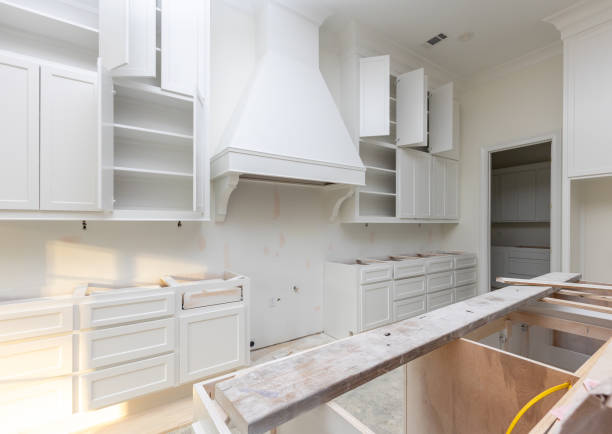As seniors age, it becomes increasingly important to create a safe and supportive environment in their homes. By taking proactive steps to address safety concerns and provide the necessary support, we can promote their well-being, independence, and overall quality of life.
In this blog post, we will explore effective ways to create a safe and supportive environment for seniors at home. These strategies encompass various aspects, from eliminating hazards to fostering social engagement and emotional support. Let’s delve into these ideas to ensure our loved ones can age in place comfortably and securely.
Remove hazards
The first step in creating a safe environment for seniors is to eliminate potential hazards. Conduct a thorough assessment of the living space, identifying and addressing any risks. Remove loose rugs or secure them with anti-slip grips. Clear pathways of clutter and ensure floors are free of obstacles.
Install handrails and grab bars in areas like bathrooms and staircases to provide stability and prevent falls. By making these simple adjustments, you significantly reduce the risk of accidents and create a safer living environment for seniors.
Adequate lighting
Good lighting is essential to enhance visibility and reduce the chances of trips and falls. Ensure all areas of the home are well-lit, especially hallways, staircases, and entryways. Install bright, energy-efficient bulbs and consider adding motion-sensor lights in key areas for added convenience and safety during nighttime navigation.
In bedrooms and bathrooms, include bedside lamps and nightlights to assist seniors with finding their way in the dark. Proper lighting not only prevents accidents but also improves the overall comfort and security of seniors at home.
Fall prevention measures
Falls are a major concern for seniors, but there are several effective fall prevention measures that can be implemented. Use non-slip mats in the bathroom to prevent slips and falls. Secure rugs with anti-slip grips or remove them altogether if necessary.
Encourage seniors to wear sturdy, well-fitting footwear with non-slip soles both inside and outside the house. Regular exercise programs, focusing on balance and strength training, can also significantly reduce the risk of falls. By implementing these measures, you create a safer environment that promotes mobility and reduces the fear of falls.
Accessibility modifications
To support seniors with mobility challenges, consider making necessary accessibility modifications to the home. Install ramps or lifts to eliminate barriers at entryways or between floors. Widening doorways can accommodate walkers or wheelchairs comfortably.
In bathrooms, install grab bars near the toilet and in the shower or bathtub. Consider using handheld showerheads and bath seats for added convenience and safety. These modifications promote independent movement and allow seniors to navigate their homes with ease, maintaining their dignity and autonomy.
Medication management
As seniors age, medication management can become a daunting task. To help them safely manage their medications, a system can be developed that involves organizing pillboxes, setting reminders, and consulting with healthcare professionals to ensure the correct dosage and timing. One option for seniors is to explore medical equipment rental options, including pill dispensers and medication reminders.
This can provide an added layer of safety and peace of mind. Additionally, seniors can work with their healthcare team to regularly review their medication regimen and adjust as needed. With a comprehensive system in place, seniors can be confident in their ability to manage their medications safely and effectively.
Adequate support systems
Establishing reliable support systems is essential for seniors aging at home. Arrange regular visits from healthcare professionals, caregivers, or family members to monitor their well-being and address any concerns promptly. Implement a communication plan that ensures open and frequent dialogue with healthcare providers and emergency contacts.
Consider using technology, such as medical alert systems, to provide a quick response in case of emergencies. By having a robust support network in place, you can provide seniors with the assistance they need, enhance their safety, and offer peace of mind to both them and their loved ones.
Social engagement
Loneliness and isolation can have a significant impact on seniors’ mental and emotional well-being. Encourage social interaction and engagement to combat these challenges. Organize activities or outings that facilitate social connections, such as book clubs, game nights, or community events.
Foster visits from friends and family members or encourage participation in local senior centers or clubs. By providing opportunities for meaningful social engagement, you not only alleviate loneliness but also promote cognitive stimulation and emotional well-being.
Emotional support
Creating a supportive environment for seniors goes beyond physical safety. Emotional support is equally important. Actively listen to seniors’ concerns and provide empathy and understanding. Encourage them to express their feelings and thoughts openly. Maintain open lines of communication, regularly checking in on their emotional well-being.
Consider involving them in decision-making processes regarding their care and daily activities. By providing emotional support and involving seniors in their own care, you foster a sense of control, dignity, and self-worth, contributing to their overall happiness and contentment.
Conclusion
Creating a safe and supportive environment for seniors at home is crucial for their well-being and independence. By removing hazards, ensuring adequate lighting, implementing fall prevention measures, making accessibility modifications, managing medications, establishing support systems, encouraging social engagement, and providing emotional support, we can create a nurturing environment where seniors can thrive and age in place comfortably.



